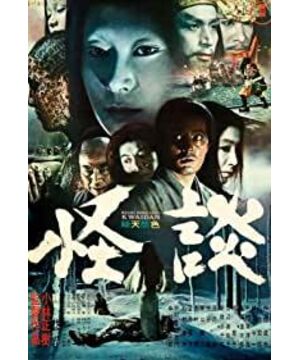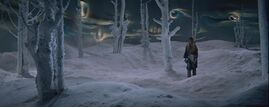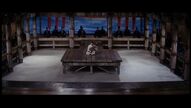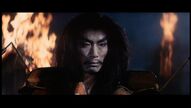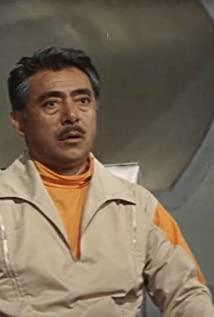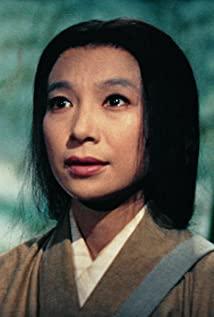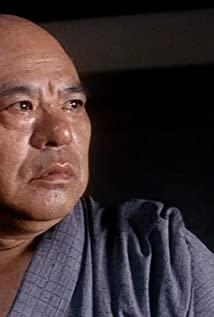Text / Not necessarily a donkey and a donkey
Wedge
I have believed for a long time that there are two versions of "Strange Talk": one is the new version of the remake that I hit in the "Midnight Bell" era, and the other is Kobayashi Masaki Old version from 1965. However, when I actually came across the old version of Kobayashi Masaki's "Strange Talk", I couldn't help but be stunned. The imprint of the "new version" of the hidden memory is like the overlapping of the original painting and the painting traced on silk, and it overlaps with the "old version". . In fact, there is no new version, it is just the same movie.
In the 1990s, I lost my age-based judgment on movies from more than 30 years ago. Of course, ignorance is one aspect, but the more I feel is my admiration for Kobayashi Masaki. Maybe only Kobayashi Masaki can make a movie that looks like the 1990s in the 1960s, and maybe there is only "Strange Talk" that can erase the vicissitudes of history and look like eternal youth.
1. Strange Talks
"Strange Talks" was written by Yakumo Koizumi, a Westerner living in Japan, in the early 20th century. He organized and recreated it based on Japanese folk stories of gods and monsters. The book consists of 39 mystical stories. Some people call "Strange Tales" Japan's "Strange Tales from a Studio", but I think the more pure Japanese flavors of "Story of the Moon in the Rain" or "Story of Spring Rain" are more suitable for this title. In a word, "Strange Talk" has a strong story and a general literary nature, with a bit of exotic "Orientalism" in it.
Kobayashi Masaki's "Strange Talk" was adapted from four of these stories. They are "Samurai's Wife", "Snow Girl", "Earless Qin Shi Fangichi" and "In the Tea Bowl".
1. black hair
The story of "Black Hair" is adapted from "Wives of Samurai". It tells the story of a samurai who abandoned his wife and left his hometown during the Heian period, and then returned home and was turned into a ghost's wife for revenge. Compared with the original work, Kobayashi Masaki magnifies the role of "revenge", and uses the "black hair" that is not rotted on the bones to create a gloomy and intimidating effect, which clearly reflects the intention of persuading good and punishing evil and Buddhist "karma". thinking. And the resentment and natural jealousy under the mask of the woman swallowing her breath are vividly portrayed, which is obviously different from Mizoguchi Kenji's handling of "The Story of a Rainy Night". The story routine of "Returning to the Wild House" in "Story of a Rainy Night" is similar to that of "Samurai's Wife", but it has become a completely different ending under the adaptation of Kenji Mizoguchi and Masaki Kobayashi from different perspectives.
In addition, "black hair" also means a wife with hair (original wife). Kobayashi Masaki's changes to the title are obviously very subtle.
2. Snow Girl
"Her cold, fair skin is reminiscent of the coldness of a snowy night, and her thick black hair is like a ray of warmth in the dark night."
This is Kawabata Yasunari in " The image of the infatuated geisha Komako created in "Snow Country", and "Snow Girl" more and more let me understand the source of inspiration and mood of Kawabata's creation of "Snow Country". I am afraid that Kobayashi Masaki also deliberately planted such a foreshadowing. Because, the snow girl and the previous actor of Komako in Toyoda Shiro's "Snow Country" are also Keiko Kishi - the beautiful Kyoto beauty Keiko Kishi.
A young woodcutter, played by Tatsuya Nakadai, was trapped in the forest by a blizzard while logging with his partner. In the evening, a woman in a white kimono with a pale face suddenly emerged from the snow. The woman sucked the yang energy of the young woodcutter's companion, and whispered to the soulless woodcutter, "Don't tell anyone what happened tonight, or I will kill you." After saying that, Shanshan left.
The next year, the woodcutter came across a beautiful and fair woman who was on her way alone one day, and approached him. The two fell in love and soon became husband and wife. Ten years later, the woman has given birth to many children to the woodcutter, but she is still as young and beautiful as ten years ago. One evening, the woodcutter looked at his wife's pale face reflecting the fire of the fire, and suddenly recalled that horrible night ten years ago. He told his wife all about it, and he felt how much you look like her.
The wife remained silent, bit her lip, and after listening quietly, her face suddenly changed, and she said faintly, "That's me!" You violated our agreement, and for the sake of our children, you will be spared for the time being... After that, you ran out of the yard and disappeared into the white snow.
Infatuated, pure, sensitive, pure and clear, the snow girl actually left a lingering fragrance like a geisha colt in "Snow Country", but it dilutes the sense of fear. When the snow girl and her husband left their hands in anger for ten years, when the dismayed husband placed the red-strap sandals with the remaining warmth of his wife on the snow, an indescribable sadness penetrated into the hearts of the viewers. Looking at the modern Japanese literary and artistic works, the creators have worked hard to create such a charm, but it is difficult to fundamentally remove the traces of artificial carving, so as to achieve a simple and natural beauty like "Snow Girl".
There are many sad stories in "Strange Talk" that are better than mortal love. Kobayashi Masaki uses the representative story of "Snow Girl" to present the most important aspect of "Strange Talk".
Kobayashi Masaki's treatment of "Snow Girl" is an "addition" process filled with flesh and blood. The understatement and mood of the original work, Kobayashi Masaki strives to make it concrete through the picture. The performance of the painting-style curtain stage, beautiful, enchanting tones with heavy make-up, such a rendering method is undoubtedly Western, but the visual atmosphere it conveys is full of the mental image perception of traditional Japanese culture. Let's look at "The Change of Snow", which Ichichuan Kun shot two years earlier than "Strange Talk", and we can find the similarities and the same effect in the same way. The unpredictable kabuki performance Ichikawa abstracted from the snow is different from the kabuki performance usually seen with the naked eye. The method of Kobayashi Masaki is the same.
Among contemporary works, Bei Yewu's "Summer of Kikujiro" is most similar to "Snow Girl" in its gorgeous handling of Masako's nightmare.
The pale face, the icy flow, the thick black hair, the shriveled jacket, and the small steps taken like a smoke. The image design of the snow girl probably originated from Kabuki or Noh music. Throughout the ages, the Snow Maiden has been an enduring and popular monster in Japan that is related to Kappa.
3. The earless piano teacher Fangichi
That happened 700 years after the "Battle of Danpo". There is an Amitabha Temple near Tanura Bay in Shimonoseki Strait, Japan. There is a blind pipa master named Fangichi in the temple.
One night, a monk from the temple went to practice outside the temple and left Fangyi alone in the temple. At this time, a warrior in armor suddenly appeared, saying that the lord wanted to listen to him play and sing and took Fangyi away. For the next few days, the samurai came to pick him up every night on time. The monk felt that this matter was strange. After investigation, it was found that Fangyi was entangled by the ghost of the Heike family. The place where Fangyi went to play every night was actually the tomb of the Heike family.
The monk Zai Fangyi wrote the Prajna Heart Sutra from head to toe, except for his ears. At night, the samurai came again, and actually tore off a pair of Fangichi's ears and took it away...
"Earless Qin Shi Fangyi" is the largest and most revealing story of Kobayashi Masaki's ambition in "Strange Talk". Like "Snow Girl", Kobayashi Masaki has done a lot of polishing on the original work. From the three aspects of war painting scroll painting, blind folk art, and human body calligraphy, the essence of Japanese classical culture is vividly displayed.
Picture scroll painting is a form of painting that tells a story. It was born in the middle of the Heian period. It paints on scrolls that are unfolded horizontally, and expresses a complete story through continuous picture changes. The picture scroll of "Battle of Danpu" in the movie is included in "The Origin of Emperor Andoku", which is based on the content of "Heike Monogatari" - the decisive battle of Danpo Bay between Genji and Heike.
In the original work, it was described that the pipa master Fangichi was good at playing and singing "The Story of Heike". In order to directly reflect the content of the singing, Kobayashi Masaki used the painting scroll of "Battle of Tanpu" to complement it. At the same time, he also shot a colorful live-action version of "Battle of Tanpu" by simulating the effect of painting scrolls. Among them, the poignant and unforgettable scene in which the dead souls of the Heike show different death postures with Yoshiichi's performance. In contemporary works, Takashi Miike's "Kumamoto Monogatari" uses a similar technique.
The greatest charm of the film is also the plot with the most aesthetic impact, sensual color and oriental charm. Nothing is more than the scene in which the monk Jae-fang is naked from head to toe and filled with the Prajna Heart Sutra to exorcise ghosts and evil spirits. Similarly, Mizoguchi Kenji also added the plot of "The Prostitution of Snakes" in "Story of the Rainy Moon", where the master wrote the characters on the back of the protagonist full of characters in seal script. In 1996, British painter and film director Peter Greenaway was also deeply attracted by the oriental classical world of "body calligraphy", and wrote an exotic version of Qing Shao Nayan's "Pillow Grass" with his own understanding.
In the original work of "Strange Talk", the pipa master Fangyi was a woman, but Kobayashi Masaki changed her to a man. He probably felt that it was more suitable for men to sing the tragic and tragic "Battle of Tanpu" (behind the scenes, the music was composed by Japanese pipa giant Jinshi Tsuruta, play and chant). On the other hand, the plots of the Pipa master Fangichi as a man staying in a monastery and being naked by a monk appear to be more common sense.
4. In the tea bowl. A writer in the late
Meiji period wrote a strange novel. He wrote that a samurai once drank a bowl of tea with the reflection of a man in the bowl, and was then approached by the person in the bowl and pestered him. Not clear... The writer has written here but has not followed up, and has not handed in the manuscript for a long time. The publisher was eager to urge the manuscript and came to visit, but found the writer's reflection in the water tank in the writer's home.
"In the Tea Bowl" is one of the four stories by Kobayashi Masaki that has changed the most from the original. And take a sarcastic approach. He discarded the lengths of "Language between people and ghosts" and "Mage exorcising ghosts" in the original work, in order to avoid repetitions with "Black Hair" and "Earless Qin Shi Fangyi". The gender of the female ghost was changed, probably to reflect the "male sex" taste of Edo. "Strange Talk" "author" Koizumi Yakumo appeared in the story, but not a blond Westerner, but a full "Edo child".
2. The Story of the Rain Moon
Masaki Kobayashi's "Strange Story" has been recognized around the world since it won the award at Cannes, and is known as the Japanese film that best reflects the cultural heritage of Japan. But is it really so?
Appreciating Japanese art, such as Noh music, pays special attention to the "eye of the mind" rather than relying on the naked eye. It uses the greatest "nothing" to brew the greatest "being". mental feeling. On the other hand, "Strange Talk", although Kobayashi Masaki painstakingly integrates Nakamura Masayoshi's picture scrolls, Takemitsu Toru's Noh music, and Tsuruta Nishiki's pipa, on the surface, it enriches the content of traditional arts and expresses the sadness of things and the soul of life. , Xuanyou's oriental aesthetics, but undoubtedly stays at the level of the so-called objective perception of "the naked eye", rather than the subjective "eye of the mind" as the starting point. That is to say, with the help of the superb methods of Western mirror language, Kobayashi Masaki has put the mental image of the "Mind Eyes" of the art expert into the visual, making its beauty and charm become concrete. It is not so much to say that it is for Westerners to see, but it is better to say that it is for laymen to directly appreciate the image outside the image in the "nothing". Taking "Snow Girl" as an example, it conveys the beauty of Japan. However, its composition on the wide screen, the use of empty shots, the stage and tone of the scene, etc., are undoubtedly Western.
On the other hand, Kobayashi Masaki's choice of "Strange Talk", an oriental ghost story text in the eyes of Westerners, inevitably has a bit of a speculative psychology that caters to the West. Perhaps only Mizoguchi Kenji can truly preserve Japanese traditional arts in the Western art of film.
Even in Japan, Mizoguchi Kenji is unanimously recognized as the most traditional director. As early as before World War II, the young Mizoguchi showed a tendency to show the theme of period dramas-at that time, Nikkei Company entrusted him to shoot all Meiji-themed works; during World War II, he lived in the classical world of Kabuki and Joruri. , produced the "Artist Trilogy", "The Story of the Remnant Chrysanthemum", "The Wave Girl" and "Artist Celebrity"; and in the golden age of Japanese movies, the works that best reflect the classical art style of Mizoguchi in his later years are his direct materials from Classical literature and art "The Western Crane Generation", "The Story of Kinmatsu" and "The Story of the Rainy Moon".
After the Second World War, Japan, under the direct intrusion of American soldiers and the impact of Western modern civilization, disintegrated the existing concepts and the old system, and the society was in a state of erratic cultural anxiety. It is precisely here that Kenji Mizoguchi is strongly aware of the artistic mission of carrying forward the national tradition. He categorically deviates from the fashionable trend of Westernization, and successively integrates the classic works of Edo period writers/playwrights Ihara Nishizuru, Ueda Akicheng, and Kanmatsumon Zaemon. To put it on the screen, from the subject matter to the form, it pursues the purest Japaneseization.
"The Story of the Rain Moon" is a bizarre novel written by Ueda Akina during the Kansei period (1789-1800) of the Edo period in Japan, which is a collection of Japanese folklore and Chinese fairy tales. The book consists of nine stories. Mizoguchi Kenji selected two of them--"The Prostitution of Snakes" and "Returning to the Deserted House at Night".
Mizoguchi Kenji combined the two stories into one story, which is actually not very harmonious, and there is no consensus on the style. In fact, it embodies Mizoguchi's two artistic tendencies in his life--the romantic beauty and the feeling of depicting the reality of Japanese women.
Among them, "Snake Sexual Prostitution" is a projection of the romantic and aesthetic side of Mizoguchi Kenji, who is known as Nagai Hefeng in the film industry, indulging in Edo sensuality and "sexy sensuality", while "Night Return to the Abandoned House" bears the ditch Works such as "Nanghua Elegy" and "Gion Sisters" show the side of women's suffering world and the virtue of forbearance.
In "Story of the Rainy Moon", Kenji Mizoguchi did not use the elements of ghosts to create eerie horror, but expressed the most ancient oriental beauty by means of a dense, mysterious, ethereal and eerie atmosphere, and by retaining the core of the ghost story's persuasion and morality was obviously deviated from Modern consciousness, complete the strategy of pure return to tradition, and achieve the beauty of harmony between form and content.
As the film theorist Tadao Sato said: Because of the appearance of the dead (ghosts), it is a world full of horror, and it is also a world worthy of pity with incomparable beauty.
1. The prostitution of the snake nature After the
Chinese legend of the White Snake was introduced to Japan, it has evolved into many different stories, the most typical of which are "The Prostitution of the Snake" in "Daocheng Temple" and "The Story of the Rainy Moon". "Snake Sexual Prostitution" is adapted from Feng Menglong's "Bai Niangzi Yongzhen Leifeng Pagoda". In the first part of the novel, Ueda Qiucheng only made some modifications and simplifications in line with Japanese social customs, while the latter part made some great functional changes. It describes the lustful nature of the snake girl who is based on the white lady and stalks Fengxiong who is based on Xu Xian and who takes mad revenge. Japanese scholars call it "the lust of the devil".
"Snake Sexual Prostitution" first appeared on the screen in the Taisho era (1921). At that time, the young Tanizaki Junichiro was employed as an art consultant by Dahuo Film Company. With great ambitions, he innovated two lines of Japanese films: one was to learn Hollywood's advanced technology and open-mindedness, so that the male role model was still popular at that time ( In Japanese movies of female form), there is an unprecedented appearance of half-naked and healthy women wearing only one swimsuit, chasing and playing lively on the beach in summer; the second is the aesthetic classical taste, which fits the kind of "The Prostitution of Snakes". The romantic classic works full of fantasy and sensual lust, full of fantasy and sensual lust, are brought to the screen. It is a pity that the technology of Japanese films at that time, both in photography and art, could not reach a level sufficient to make this beauty shine. Moreover, Tanizaki's collaborator, Kurihara Thomas, who had no sense of Japanese classical beauty and thus lacked imagination, returned from the United States as the director, was the fatal reason for the film's failure. Tanizaki's ambitions ended in failure. The failure of "Snake Sexual Prostitution" also led to the hasty death of Dahuo Film Company.
Thirty years later, Japanese film technology has finally matured, not to mention that there are great artists like Kenji Mizoguchi who have spent his life in the classical world, writer Kawaguchi Matsutaro, playwright Yoshihide Ida, and photographer Kazuo Miyakawa. All of them provide an opportunity for the visual presentation of "Snake Sexual Prostitution". Mizoguchi has always been talked about by people, and the panoramic long shot that contains the Japanese character has played its greatest value in "Snake Sexual Prostitution".
In "Strange Talk", Kobayashi Masaki pointed the camera directly at the "Battle of Tanpu" picture scroll, and also simulated a picture scroll effect image, but it was only a small wisdom to play by borrowing the title, such a rigid imitation can only be seen in the form. its god. Furthermore, for him, picture scrolls are just objects, not artistic carriers. On the other hand, "The Story of the Rainy Moon" is the exact opposite of him. Mizoguchi Kenji's panorama and long-lens layout, bird's-eye-view composition, mutual symmetry, continuous flow and other imaging methods are undoubtedly explored on the basis of effectively absorbing the ancient oriental art carrier of painting scrolls.
There are elements of Noh in the movies "Strange Story" and "Umatsu Story". Noh, the oldest drama in Japan, is largely related to ghosts and gods. For example, in "Dream Neng", "Waki Neng", "Shura Neng", "Oyster Neng" and "Ghost Animal Neng" are all about ghosts and spirits. theme. For this reason, Kobayashi Masaki and Mizoguchi Kenji have not forgotten to use the elements of Noh. However, Toru Takemitsu's Noh "Ballad" actually played the role of sound montage in "Strange Talk", and did not really participate in the story, but only served as a foil and external rendering of the theme of the story. On the other hand, in The Story of the Rainy Moon, it can be seen that Kenji Mizoguchi has directly absorbed and quoted Noh music. When "Xu Xian" visited the "Snake Girl" mansion for the first time, the graceful folding fan dance of "Snake Girl" was undoubtedly born out of the performance of energy music. The ancient armor placed at the shrine responded to the sound of "Bad Song", which also well reflected the symbolic intention of the Noh mask. Can not but give people a sense of mysterious and profound.
In addition, Mizoguchi Kenji finally added the plot of "The Prostitution of Snakes" where the master wrote the characters on the back and hands and feet of the protagonist, which is from "Kibizu no Kettle" in "Story of the Rainy Moon".
2. The Night Returns to the Deserted House
"Night Returns to the Deserted House" can be described as another version of "Black Hair". A man leaves his hometown for his dream of making a fortune, waiting for his husband's wife to die unexpectedly. What a sublime femininity this is.
Mizoguchi Kenji reflected the oriental value orientation of "keeping oneself safe" through the film, thereby maintaining the purity of the East. In such soil, he nurtured the oriental traditional women who have always been full of gratitude, and praised and worshipped them. In that ignorant, backward, male-dominated feudal era, the traditional virtues praised by Japanese women—virtuousness, generosity, obedience, and loyalty—were clearly brought out.
Film information:
"Strange Talk" 1965
Director : Masaki Kobayashi
Original work: Yakumo Koizumi
Starring : Rentaro Nakadai Tatsuyagishi Keiko Nakamura Kazuo Nakamura Played in the Uemon
Produced by Toho
, "The Story of the Rain Moon" 1953
Director: Kenji Mizoguchi
Original work: Ueda Akina
Starring: Kyomachiko Tanaka Kinyo Moriyuki
Produced by: Daiei Kyoto
View more about Kwaidan reviews


